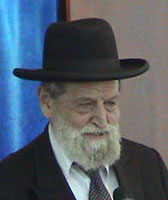Beit Midrash
- Sections
- Chemdat Yamim
- P'ninat Mishpat
The responsa before us was written to explain to someone the basics in an area of halacha the latter did not understand, not as a response to a specific case. Nevertheless, an element of the teshuva made it into the halachic classic, the Beit Yosef, Choshen Mishpat 346. The matter is the concept of b’alav imo (see Shemot 22:13-14), whereby if the owner of a borrowed object was working for the borrower at the time of the borrowing, the borrower does not have to pay if something happens to the object. This is perhaps the classic example of a chok within the laws of monetary affairs. One of the interesting things about this response is that the chiddush is in the interplay between Choshen Mishpat and Orach Chayim, specifically regarding communal matters of a shul. This is the section of the responsum upon which we will focus.]
First, realize that if the owner is working for the borrower (or any other type of watchman), it does not make a difference if the work involves the owner’s object. The gemara (Bava Metzia 97a) says that certain workmen for the people of the city, including the barber and the bloodletter (doctor is approximately the modern equivalent) are considered working for the people of the city in general. The gemara also tells about the debate between Rava and his students. The latter claimed that regarding these halachot, Rava would be considered working for them. Rava responded that it was the students who were working for him, since he could choose the curriculum. The gemara concludes that generally Rava was right, but at certain times of the year, when the subject matter had to relate to the issues of the time of the year, Rava was considered their worker, and if they lost his object, they would be exempt.
We can learn from these gemarot the halacha in the following application regarding public servants. A set community chazan is considered a worker of the members of the community as a whole, so that they would not be responsible if they failed as watchmen for his object. At the same time, the people of the city are also working for the chazan, as he can force them to assemble to ensure that there is a minyan for the services he wants to lead. One might want to claim that if there are more than ten people in the city, each one could say that he is not obligated toward the chazan, as he can refuse to come since there are others to form the minyan. However, that would not be correct, as we can see from the discussion regarding Rava. Although any individual student could say that the shiur could go on without him, since he is part of a group that must assemble for Rava’s shiur, each member of the group is considered as one who is working for the teacher. The same is true regarding the community and its chazan.

P'ninat Mishpat (802)
Various Rabbis
291 - Applying the Law
292 - Authority to Rule Based
293 - Accessory to an Alleged Crime
Load More

P'ninat Mishpat: A Used Car with a Tendency Toward Engine Problems
based on appeal ruling 84034 of the Eretz Hemdah-Gazit Rabbinical Courts
Beit Din Eretz Hemda - Gazit | Av 5785

P'ninat Mishpat: Did Any Furniture Go to the Buyer? – part I
based on ruling 84093 of the Eretz Hemdah-Gazit Rabbinical Courts
Beit Din Eretz Hemda - Gazit | Kislev 5786

P'ninat Mishpat: Using Car that Was Supposed to be Returned
based on ruling 84065 of the Eretz Hemdah-Gazit Rabbinical Courts
Beit Din Eretz Hemda - Gazit | Av 5785





















